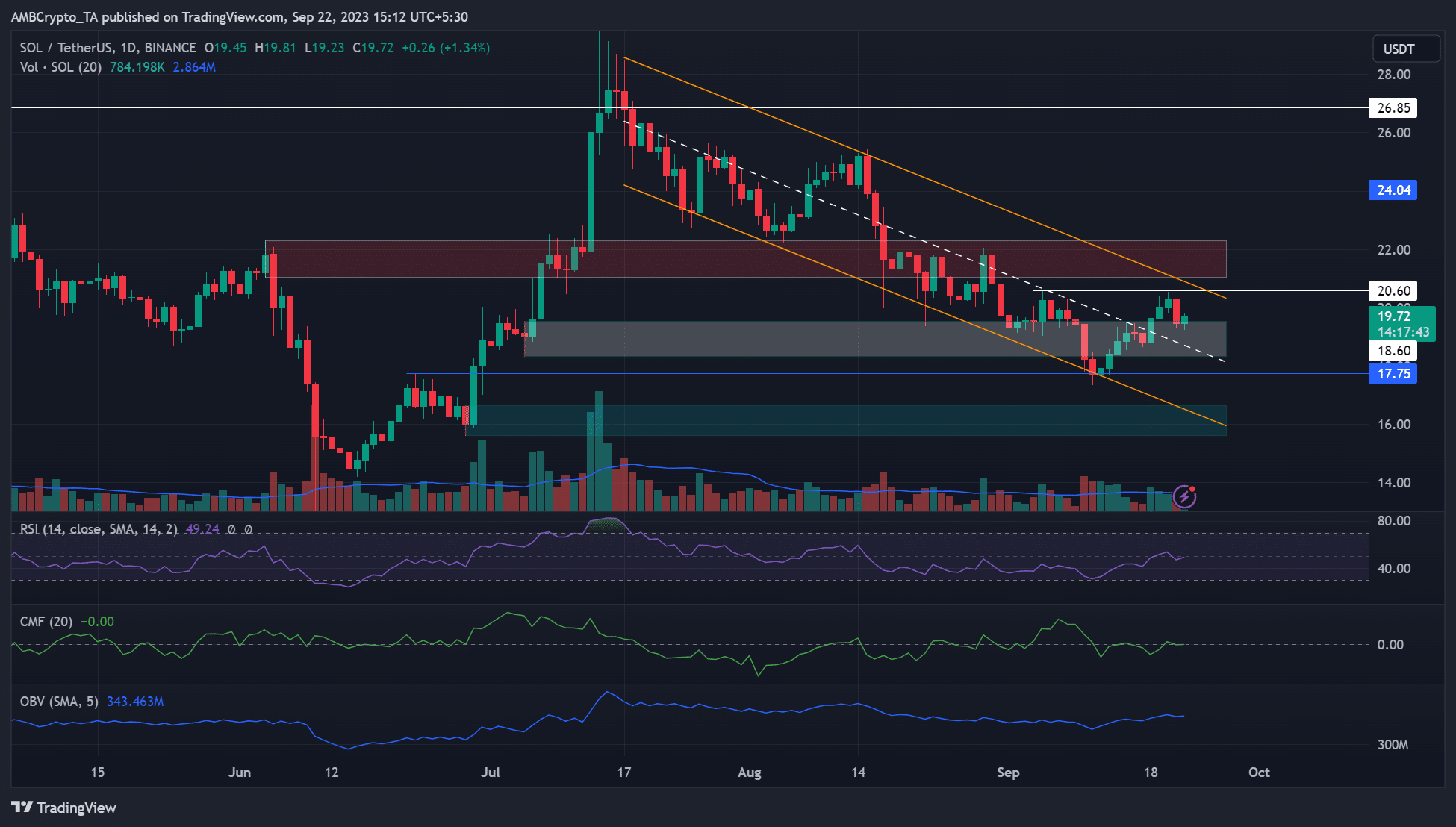Analysis
Solana: Why the $20 roadblock could persist
Solana could find it challenging to go beyond $20 because it’s a confluence of a few resistance levels.

Disclaimer: The information presented does not constitute financial, investment, trading, or other types of advice and is solely the writer’s opinion.
- The $20 price area was a confluence of many resistance levels.
- Demand dipped in the Futures market as sellers gained more control.
Despite Solana’s [SOL] impressive recovery, the overall price action was in a downtrend. The move to a recent high of $20.54, down from $17.3 meant that bulls tucked in +18% gains. However, exceeding the $20 value could become challenging for this reason.
Is your portfolio green? Check out the SOL Profit Calculator
Should bulls be worried about the $20 hurdle?
On the daily chart, the price action since July chalked a descending channel. The recent recovery from 11 September bounced from the channel’s range-low ($17) and eased slightly at the mid-range before faltering near the range-high.
The retracement at press time could ease at the H12 bullish order block (OB) of $18.3 – $19.5 (white). The OB has a confluence with the mid-range and could ease the reversal if Bitcoin [BTC] doesn’t incur more losses in the midterm.
So, the $16, $17.75, and the mid-range ($18) are key interest levels for buyers.
However, the $20 level is a confluence of resistance levels. At press time, SOL could not exceed $20.60, making the daily timeframe market structure bearish. A bearish OB exists above the range-high and could make exceeding $20 difficult unless BTC rallies.
The Spot market demand influenced the recent recovery, as the OBV showed. However, the CMF and RSI faltered near key threshold levels, indicating capital inflows and buying pressure eased.
Sellers gained more market control
How much are 1,10,100 SOLs worth today?
Sellers gained more market control, as illustrated by the extended decline of the CVD (Cumulative Volume Delta). In addition, the Open Interest rate eased, meaning that demand dipped slightly.
Besides, the negative ASI (Accumulative Swing Index) underscores SOL’s price action was in a long-term downtrend. The ASI tracks the strength of price swings, and the negative reading further cement sellers’ leverage, especially on the higher timeframe charts.


